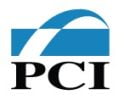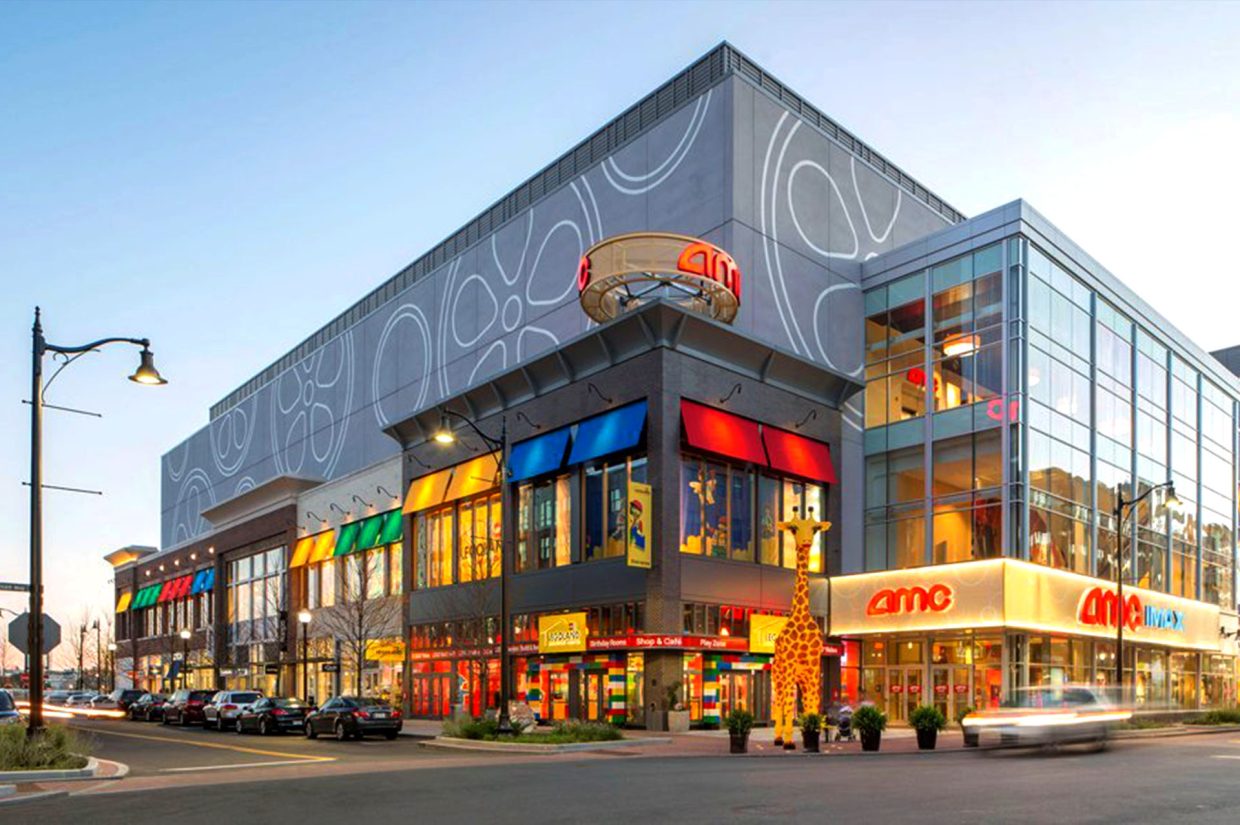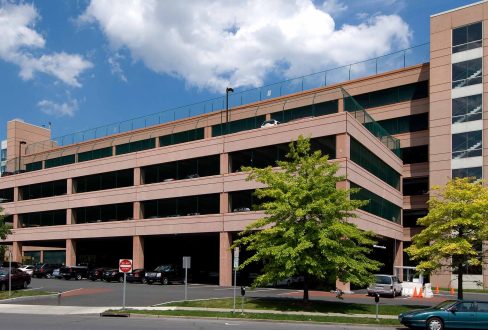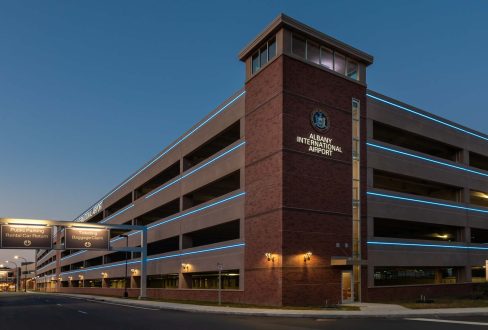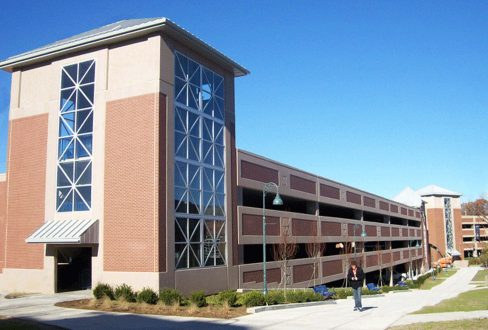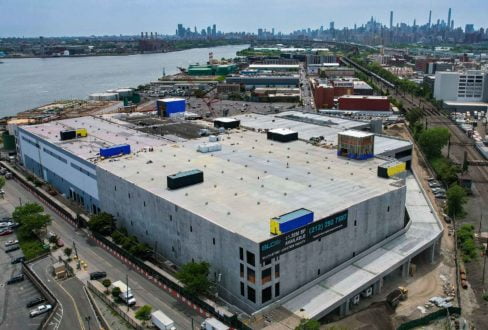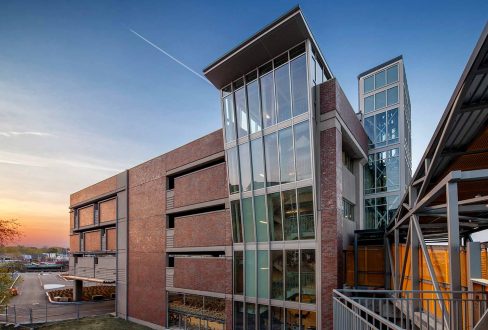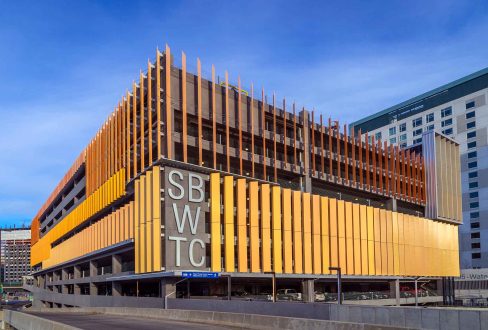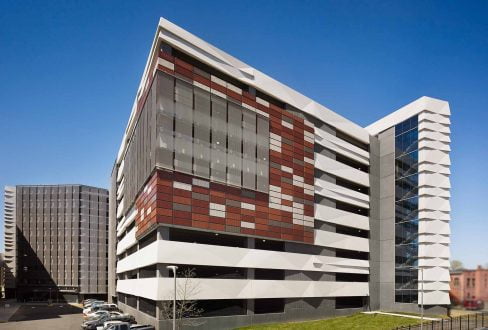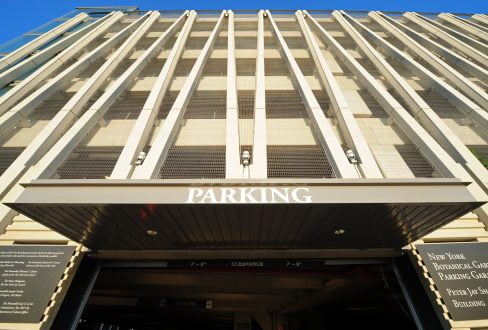Over $8M in savings from value engineering
The new seven-story Assembly Row parking structure in Somerville does more than offer weary shoppers a place to leave their cars. The building replaces a formerly contaminated industrial site, providing an anchor structure that will play a key role in transforming the city center into an urban destination, connecting community, commerce, and mass transit.
The structure was part of a larger project to build the city’s tallest building and connect it to adjoining residential structures. While the complete structure took three years to construct, the project owners wanted to fast-track the precast concrete parking structure. They needed an experienced precast concrete design and construction team to help make it happen.
Partnering with Unistress upfront through real-time design and BIM resulted in the elimination of redundancies and the reduction of conflicts in drawings and change orders.
Challenge
A enormous build over the garage required us to bring in massive structural steel supports through the garage. It was unheard of.
Solution: Concrete and Steel
The precast concrete parking structure incorporated a unique hybrid design using steel bracing frames on the exterior and steel columns bearing on shared shear walls to support a residential tower above the structure. The hybrid design required early coordination between Unistress, the architect and engineer to work out expansion joints, ductile connections, precast concrete product layout, and block-out locations.
The project required steel columns from the 10-story residential tower to needle down and through the structure, which is skewed and offset from the precast concrete parking structure below. They needed the precast concrete parking structure elements to brace the steel needle columns, but not to transfer gravity loads, explains Daniel Batt, Odeh Engineers. “Working with precast concrete producers on this project and having them join in the design team as a design-assist partner from the schematic design phase allowed us to do this detailed coordination during the design phase,” he says.
To accommodate the skewed layout of the adjoining residential tower, we integrated diagonal steel bracing through block-out tees in the precast concrete floors and walls and worked closely with the PCI-certified erector to coordinate the steel elements and connection details. We worked together with the designer to develop unique ductile connections to ensure the successful integration of the precast concrete parking structure and steel residential towers. “The coordination between the steel and the precast concrete eased the transition of construction phases beyond the erection of the precast,” says Scott Long of Prime Steel Erecting.
The design also resulted in high shear loads from the residential tower that had to transfer into the precast concrete parking structure shear walls. That required sophisticated detailing and coordination between the precast concrete, steel, and cast-in-place concrete elements. The close collaboration between all of the teams on this project resulted in a resilient structure that gave the designers the flexibility to begin leasing residential units and opening retail spaces sooner than anticipated.
“It was extremely gratifying to be part of a team that recognized the value of precast concrete and the benefits of partnering up front to resolve constructability issues and maximize opportunities for value engineering,” Petricca says.
Role of Design Assist
Our team worked closely with the project owner to streamline the design process and rein in costs. “Partnering with the precast concrete producer upfront through real-time design and BIM resulted in the elimination of redundancies and the reduction of conflicts in drawings and change orders,” says Steve Callahan Jr., Vice President of Business Development for Callahan Construction.
Through close collaboration, the teams identified value-engineering opportunities worth roughly $8 million during the preconstruction phase alone. “We were able to resolve many complex engineering and façade issues early in the design phase, generating significant cost and schedule savings,” says Perri Petricca, Chief Executive Officer of Unistress.

